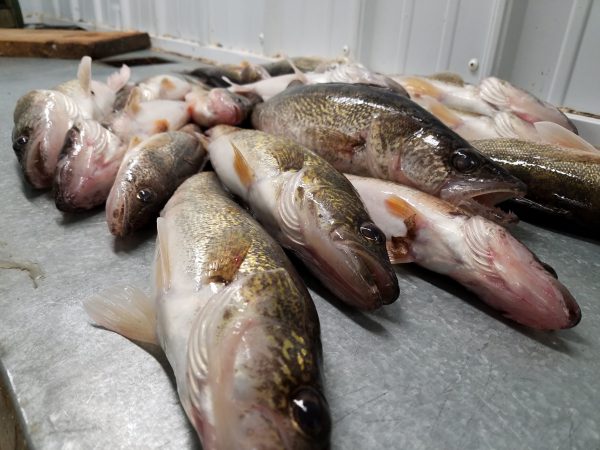Mille Lacs anglers allowed 1 walleye starting Dec. 1
Category: article
Nov 9th, 2020 by Keith Worrall
Modified Nov 9th, 2020 at 6:10 PM
Mille Lacs anglers allowed 1 walleye starting Dec. 1
November 2, 2020
by Minnesota DNR Reports
Winter anglers on Lake Mille Lacs will see a limited walleye harvest this winter for the fifth season in a row.
Starting Tuesday, Dec. 1, anglers will be allowed to keep one walleye between 21-23 inches or one fish longer than 28 inches. This is the same regulation as the last two winter seasons.
“It’s good news that anglers will be able to harvest walleye again this winter,” said Sarah Strommen, commissioner of the Minnesota DNR. “Conservative management continues to sustain good fishing on Mille Lacs.”
Mille Lacs was a popular ice fishing destination during the winter of 2019-2020, in part due to poor ice conditions on other large Minnesota lakes. Anglers put in a record of more than 3 million fishing hours on the lake last winter. In each of the previous three winters, anglers spent about 2 million hours fishing on Mille Lacs.
“We want to provide anglers the opportunity to catch and keep some fish when the walleye population can support it,” said Brad Parsons, DNR fisheries section manager. “As in recent winters, we’re confident that the walleye population is abundant enough to support some harvest.”
Winter regulations are set after the DNR completes its annual fall netting assessment. The DNR’s 2020 assessment found that the walleye population has remained relatively stable over the past four years, having rebounded from population lows seen from 2012 to 2016.
Harvest from the winter of 2020-21 will be counted toward the state’s annual share of walleye from Mille Lacs under the 1837 treaty. State anglers share harvest with eight Ojibwe tribes that have fishing rights under the treaty.
The state’s allowable harvest for the coming year will be set in early 2021 through discussions between the state and the tribes. The DNR will set open water fishing regulations in March 2021 following discussions with the tribes and the Mille Lacs Fisheries Advisory Committee and after the conclusion of winter fishing.
Conservative fishing regulations in response to population lows have contributed to the recovery, allowing the DNR to offer anglers a harvest opportunity in recent winters and in May 2019 during the open water fishing season.
While encouraged by the rebound in walleye abundance, the DNR is taking a cautious approach to managing Mille Lacs’ walleye fishery. Survival of walleye to age 3 and older has been inconsistent in recent years.
The 2013 year class – that is, fish born in 2013 — continues to be the most abundant class of fish. These fish are mainly 17-21 inches long, with faster growing individuals exceeding 21 inches. Year classes from 2009 to 2012 were weak, and had low numbers grow to adults, while those produced since 2013 have had more fish survive to adulthood.
The 2014 year class is below average compared with those from the last 15 years. The 2015 and 2016 year classes appear close to average, and the 2017 year class is well above average. Since 2008, only the 2013 and 2017 year classes have been above average.
“We are encouraged to see additional year classes that will be contributing to the fishery,” Parsons said. “Having multiple year classes approaching maturity makes us comfortable with continuing to harvest some of the 2013 year class under this winter’s regulation.”
The assessment also looks at food abundance and walleye health. Perch and tullibee are the primary food source for Mille Lacs’ walleye. Perch and tullibee from 0 to 2 years old were caught in moderate numbers.
Walleye condition, often referred to as plumpness, remained lower than recent averages. The relatively thin condition of fish suggest that forage was limited during parts of this year.
That lack of food contributed to the high catch rates in Mille Lacs early this summer. But that rate dropped in August and September, suggesting that the availability of forage improved later in the summer as fish hatched in 2020 grew and became a part of walleye diets.
“A lower catch rate in the late summer can sometimes carry over into the winter if forage is abundant,” Parsons said. “But predators also can reduce available forage later in the winter, possibly leading to an improved bite.”
